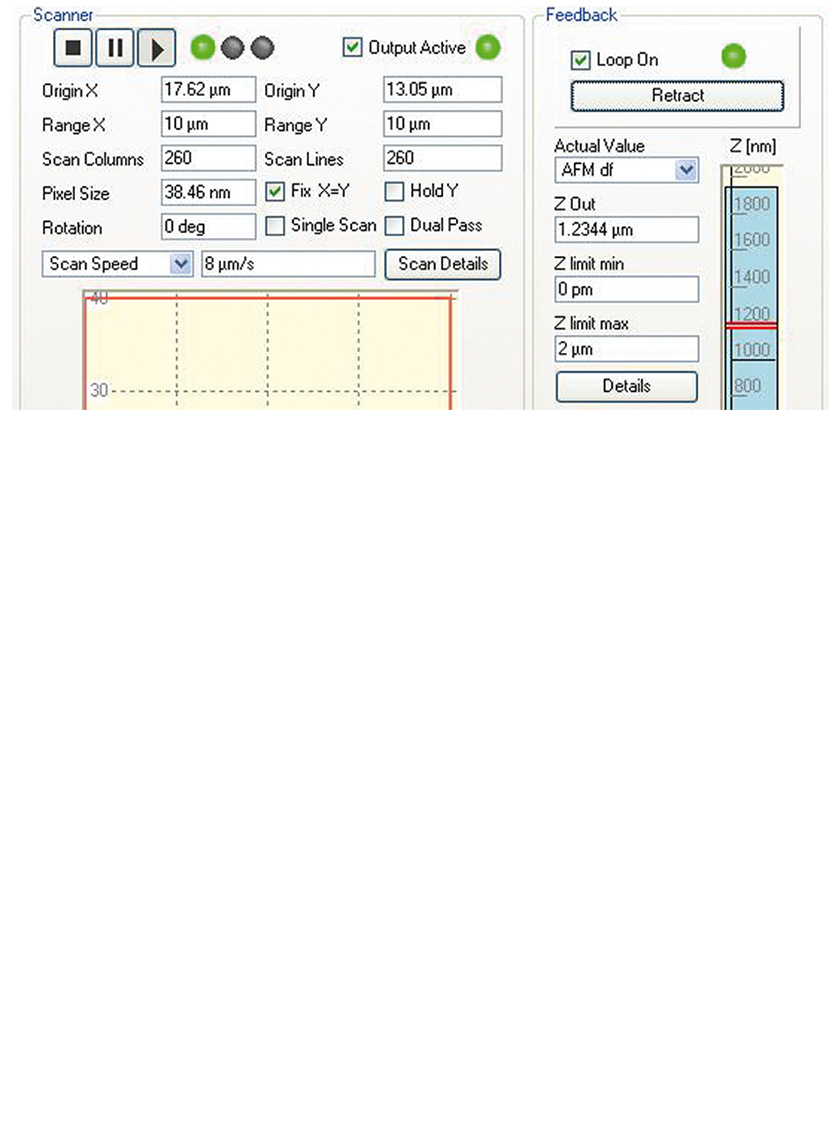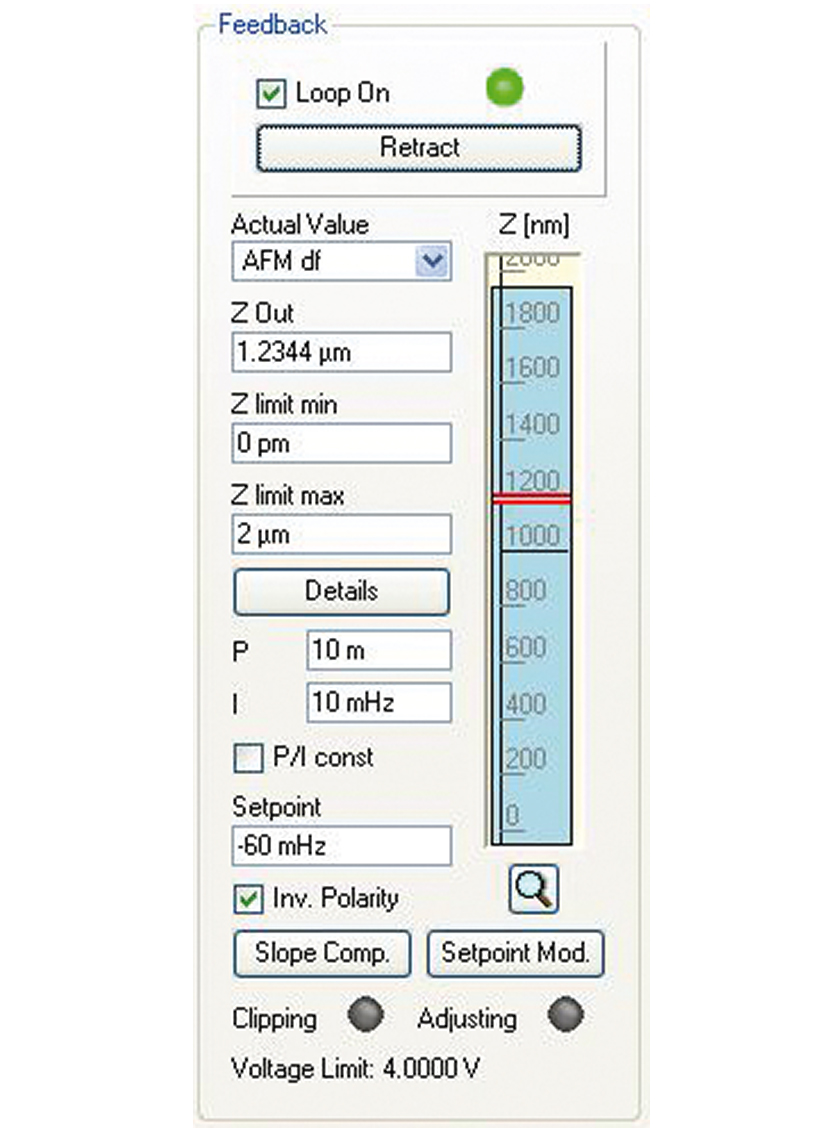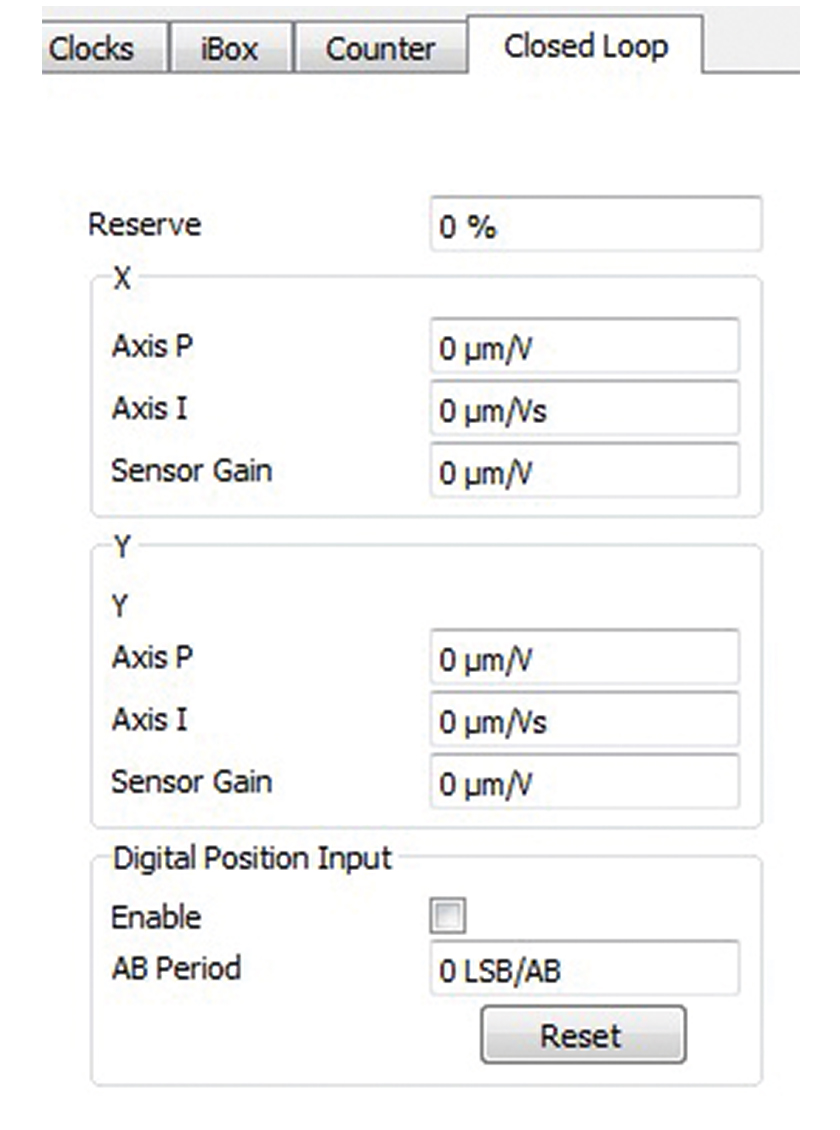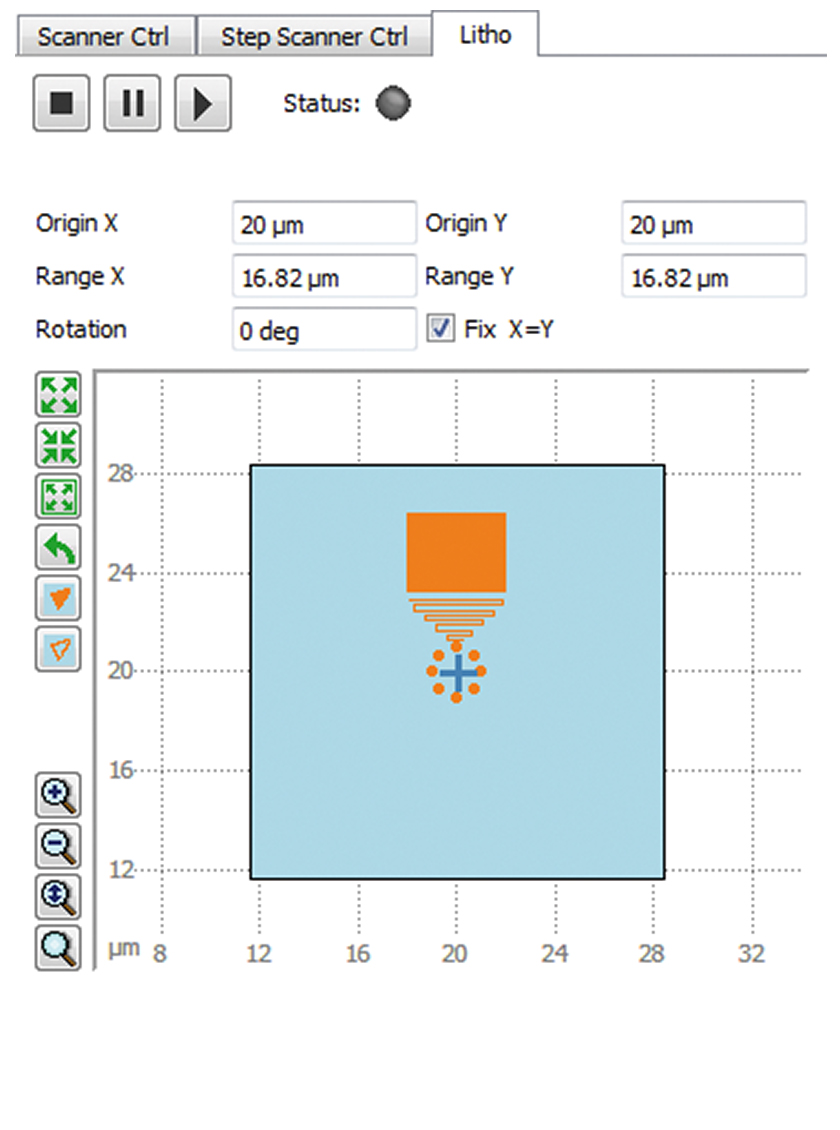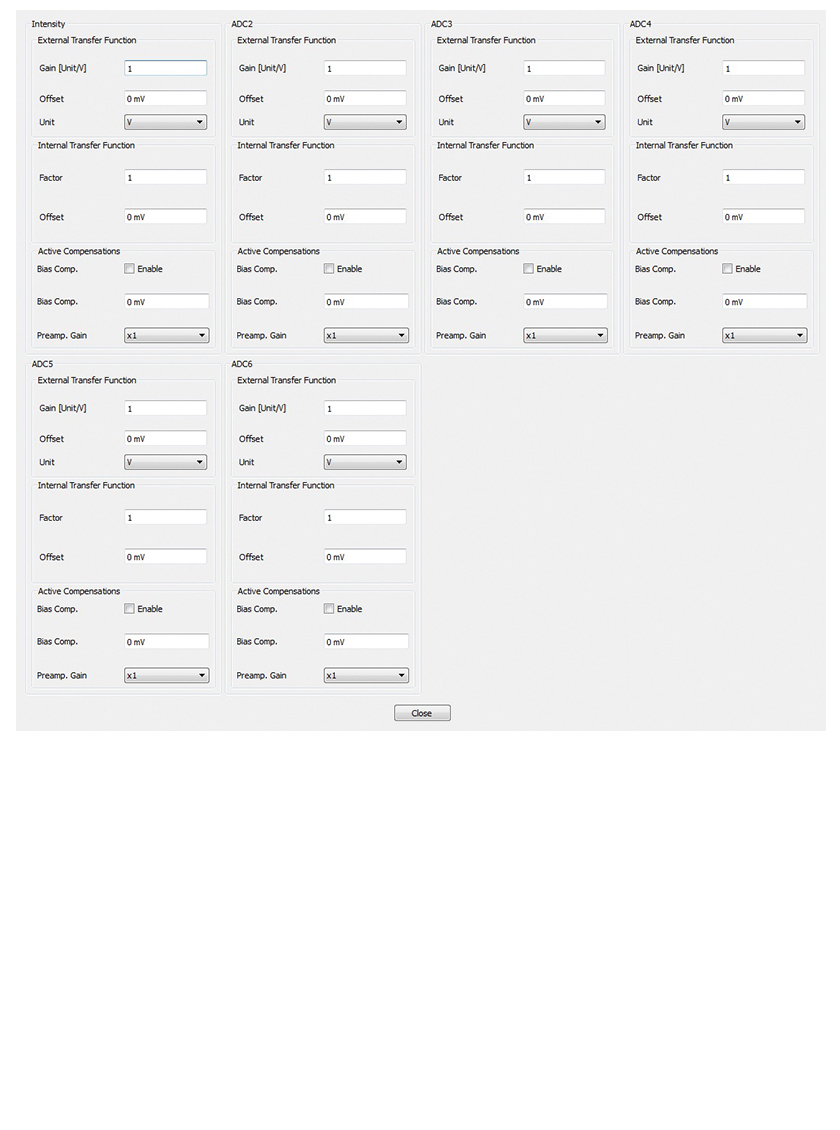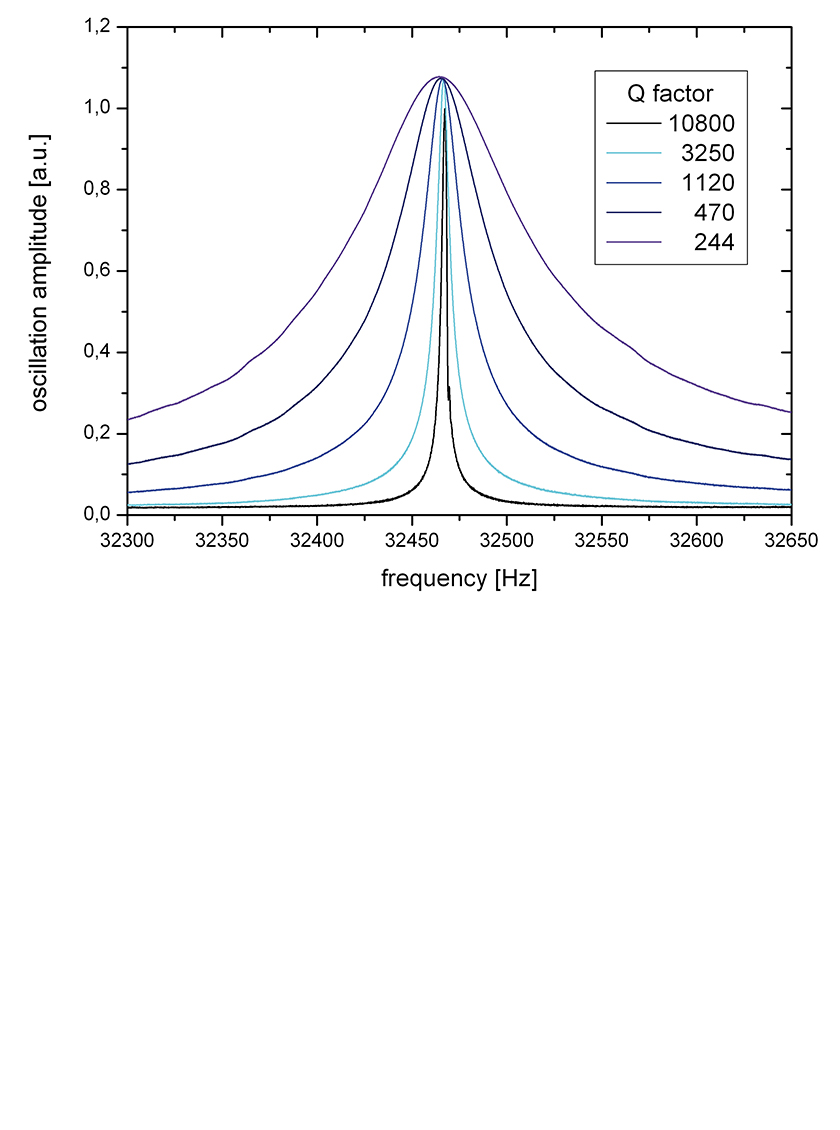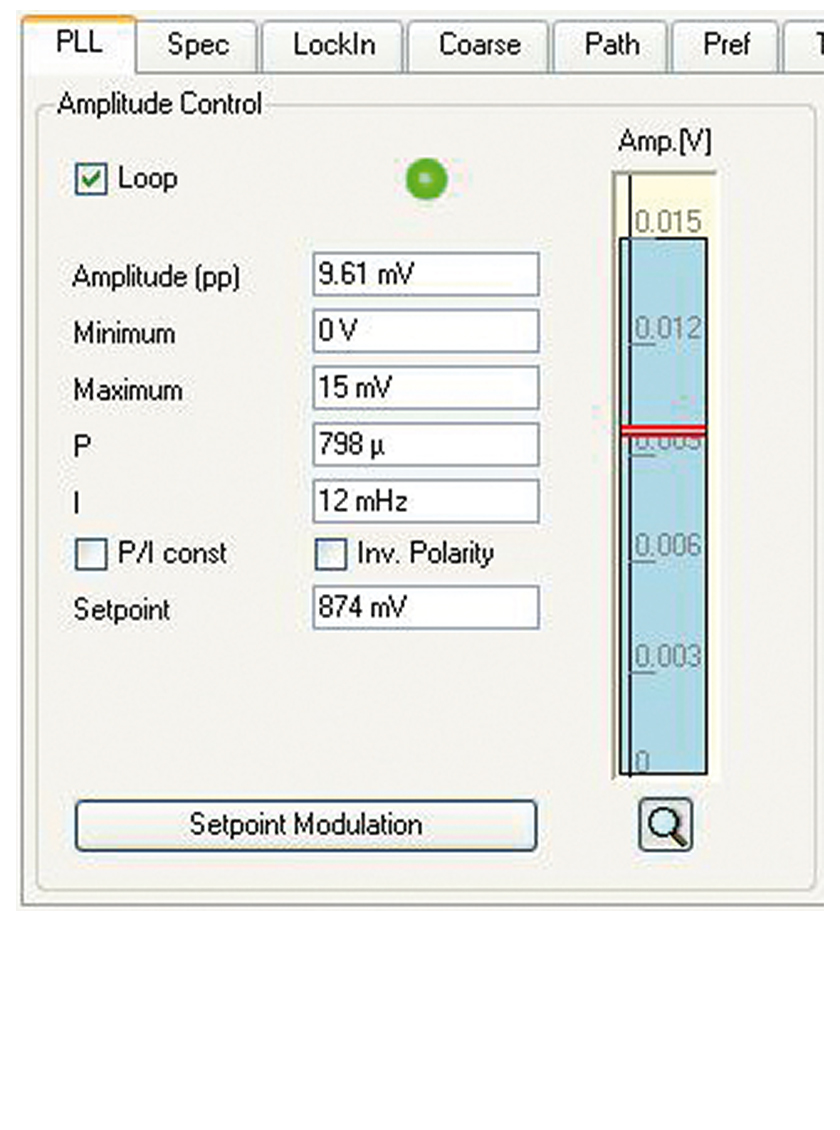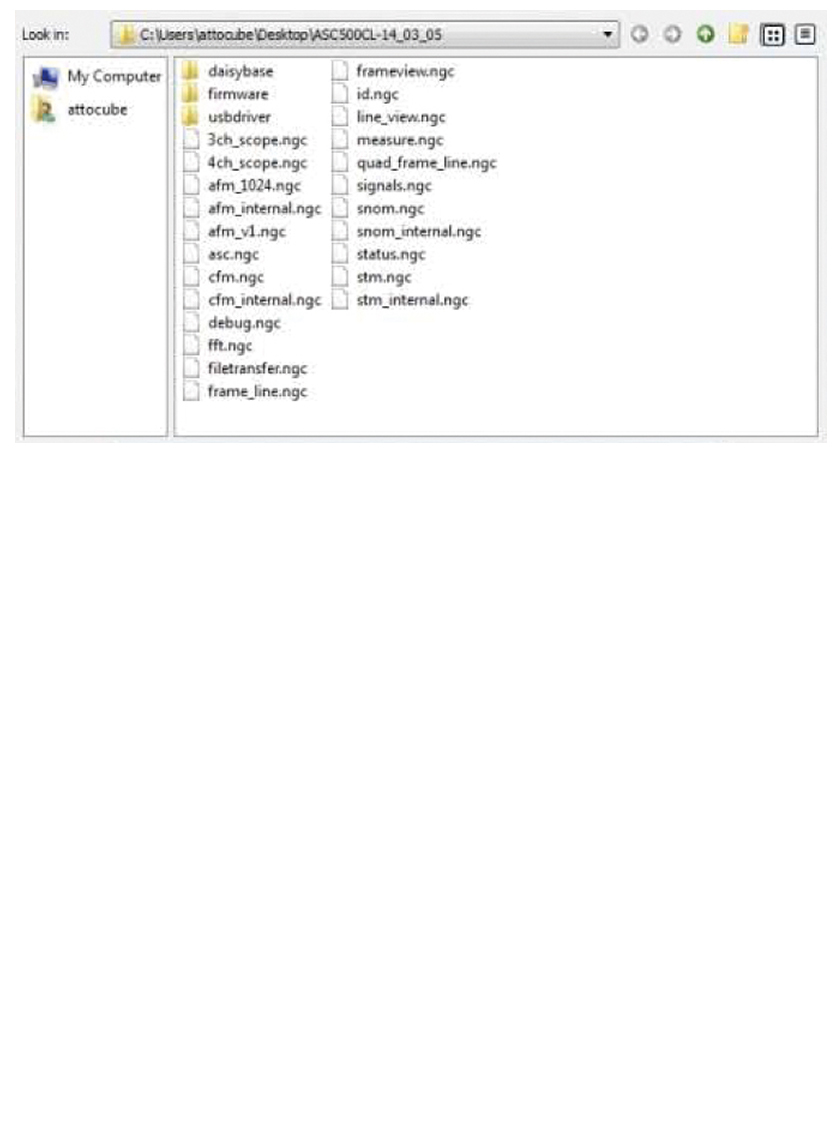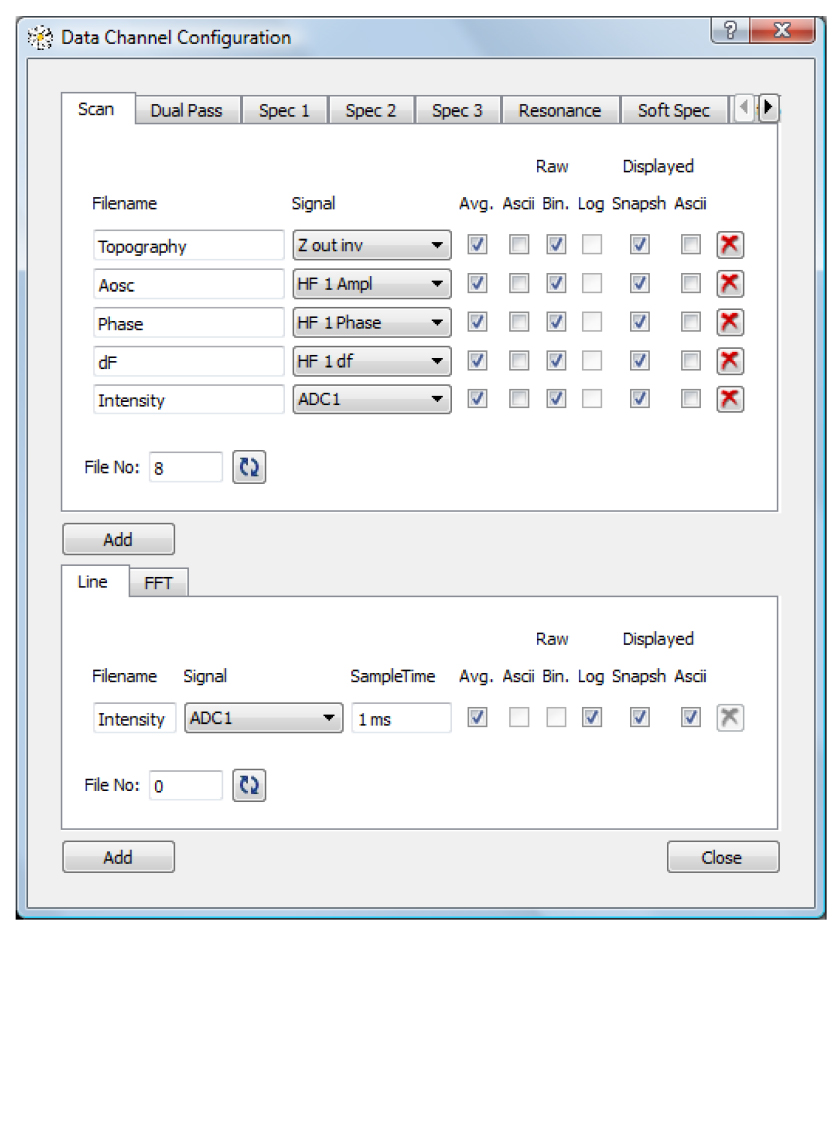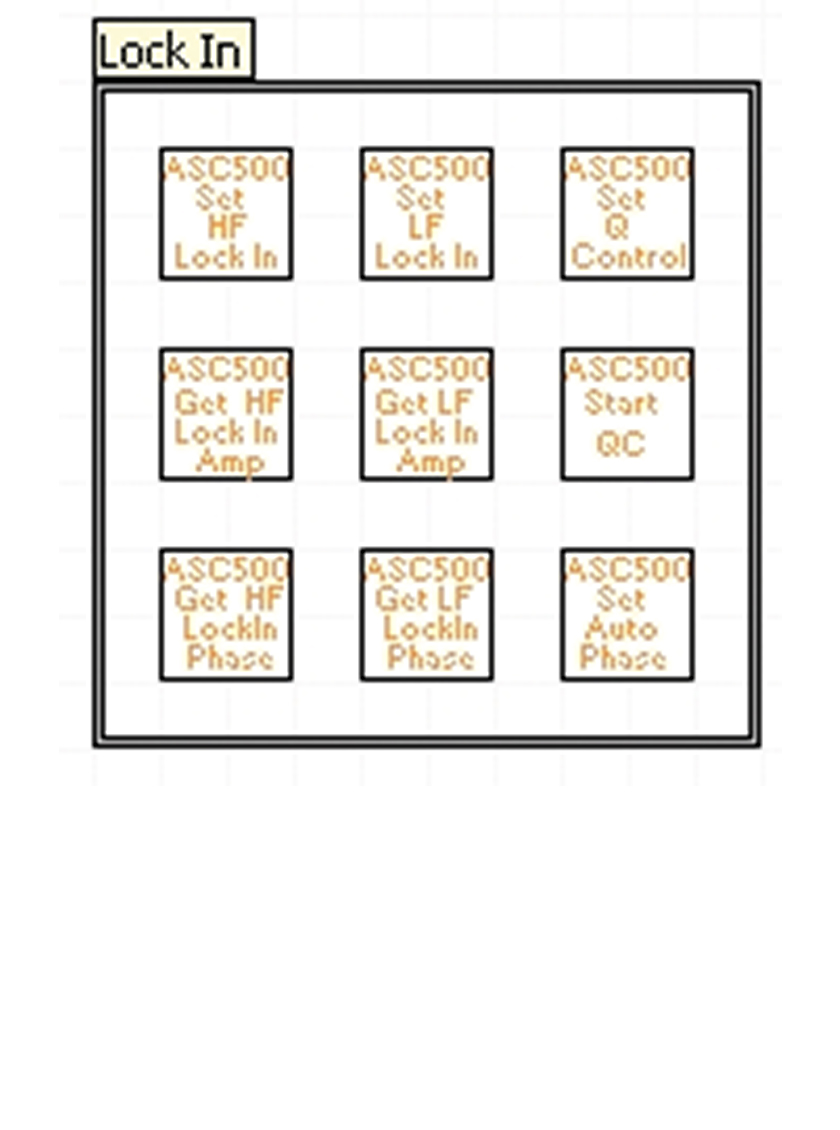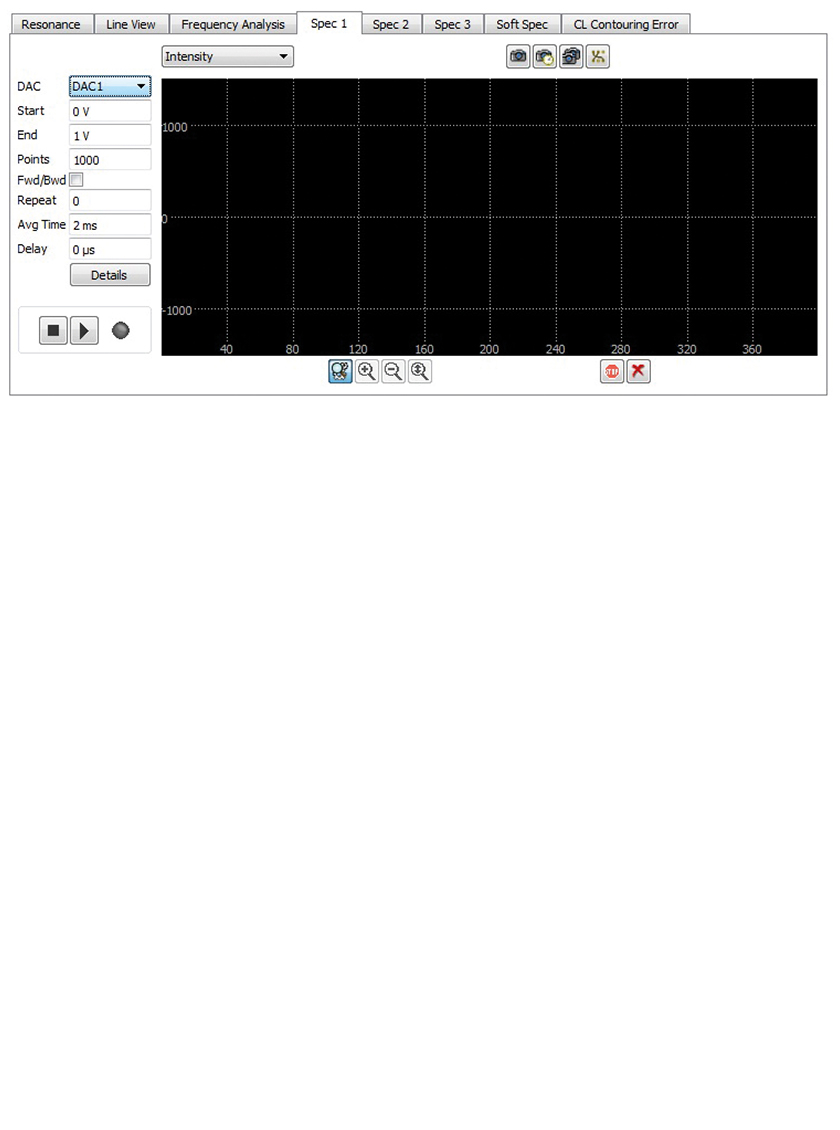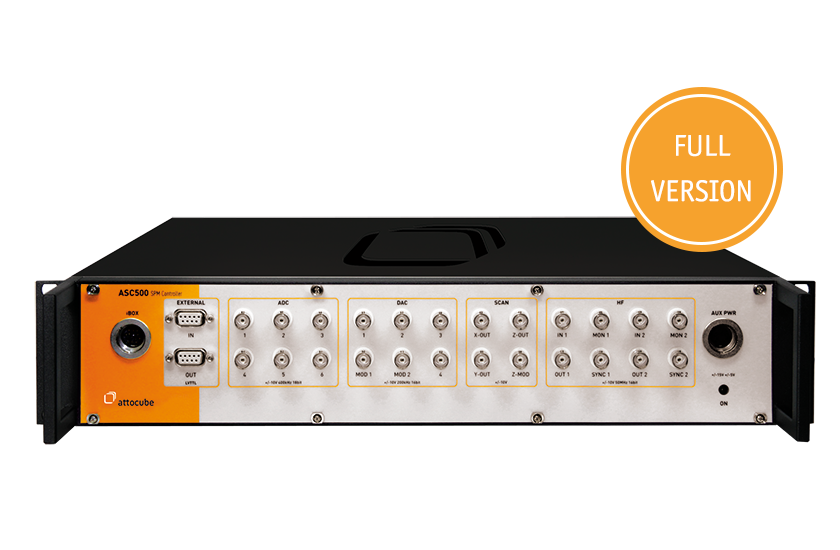
ASC500 Full Version
fully digital SPM controller with xy-scan generator and z feedback control, phase locked loop (PLL)
The ASC500 is attocube’s flagship microscopy controller with a very generic hard- and software concept compatible with almost any scanning probe microscopy technique. All desirable functions and high-end specifications for conducting the experiment of your choice in AFM, MFM, KPFM, PRFM, CFM, SHPM, SNOM, STM, and many more measurement techniques are available. The ASC500 features optional closed loop functionality, fully supporting attocube’s FPS interferometric sensors.
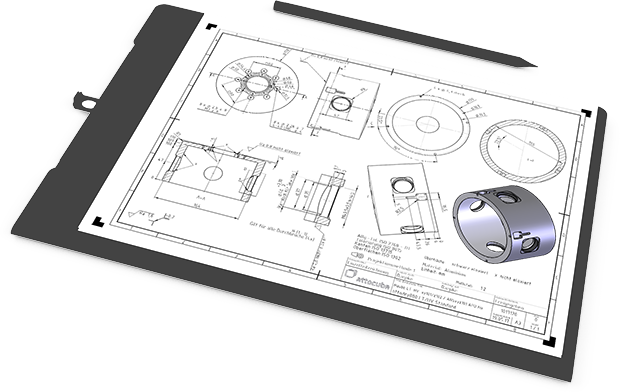
Specifications
| Size and Dimensions | |
|---|---|
| chassis | 19" rack, 2 rack units, 9 x 45 x 40 cm³ |
| weight | 10 kg |
| Controller Hardware | |
| power supply | 100/115/230V, 50 .. 60 Hz |
| power consumption [W] | max. 80 |
| connector | IEC inlet |
| Output Signals | |
| frequency range | 1 kHz .. 500 kHz |
| Detection | |
| measurement bandwidth | 50 kHz |
| Interfaces | |
| xy scan voltage output | 2 x -10 .. +10 , 16 (+16) bit, 5 MHz with programmable tilt correction uni-/bipolar, output limiter, slewrate control |
| z voltage output | -10 .. +10 V, 18 bit, 200 kS/s uni-/bipolar, output limiter, slewrate control |
| analog ADC inputs | 6 x -10 .. +10 V, 18 bit, 400 kS/s ADC with programmable offset and gain compensation |
| analog DAC outputs | 4 x -10 .. +10 V, 16 bit, 200 kS/s DAC switchable 2nd order low pass 3 kHz / 100 kHz noise: 16 µVrms (10 Hz..100 kHz) |
| analog modulation inputs | -10 .. 10 V, DC .. 50 kHz for DAC 1, DAC 2, and Z-Out |
| high frequency section | 2 x 16 bit, 50 MS/s ADC with continuous signal amplification, 2 x 16 bit, 50 MS/s DDS-DAC, oscillation excitation, 2 x monitor output of preamplified signal, 2 x SYNC output with fixed 10 V amplitude |
| general purpose digital interface | 8 bit LVTTL trigger input, 8 bit LVTTL trigger output, e.g. pixel-, line-, frame-clock, for optional programmable in / out sync, counter |
| digital serial interface (RS232) | connection to ANC300 for coarse movement |
| digital serial interface (NSL) | connection to ANC350 for closed loop coarse movement |
| host computer interface | USB 2.0 high speed, LAN 100 Mbit |
| auxiliary power outlet | +/-5 V (0.2 A) and +/-15 V (0.1 A) |
| Resolution | |
| frame view display modes | 2 frame views, 2 line views, easy generation of additional frames possible |
| frame view options | oversampling, autosave (png, ASCII, bcrf), line subtraction line view with up to 16 subsequent lines |
| frame view selection tools | frame alignment, frame centering, zoom function, path mode, grid mode |
| Scan Generation | |
| pixel clock [kHz] | 312.5 |
| resolution | 20 bit (16 bit, 16x oversampling) |
| features (scan) | slope compensation, switchable uni-/bipola, software rotation and zoom, slew-rate controlled movement |
| scan speed | 1 pm/s .. 2 mm/s |
| frame rate | max. 20 Hz @ 100 x 100 pixel |
| Sample Positioning | |
| sensor type | interferometric (FPS 19” SLIMLINE) or position triggered scanning |
| closed loop sensor range | 5 mm x 5 mm |
| closed loop scan resolution (steady state, 100 ms sample time) | down to 1 nm (usually limited by noise & vibration levels) |
| Z Controller | |
| z feedback | digital P/I, anti wind-up |
| z resolution | 18 bit, up to 34 bit for small control range |
| input control signal | any internal signal channel |
| features (z controller) | external modulation input, setpoint modulation, invertable, feedback gain and output polarity, P/I gains in physical units |
| Phase Locked Loop (PPL) | |
| features (PLL) | 2 P/I controllers with graphical interface |
| frequency resolution [µHz] | 0.14 |
| Q Control | |
| q feedabck type | electronic, phase controlled |
| efficiency of Q control | decrease or increase of Q by factor 10 typical |
| Spectral Performance | |
| spectroscopy modes | point/line/grid spectroscopy (up to 1024 x 1024 pixel) |
| spectroscopy type | z-spectroscopy, bias spectroscopy, soft spectroscopy (all GUI parameters), dI/dV with internal Lock-In |
| averaging | 25 µs up to 160 ms per data point |
| spectroscopy parameters | control loop off, signal limiter |
| Second Pass Mode | |
| second pass mode - working principle | 2nd pass with height offset or different scan parameter set |
| second pass mode - parameters | height offset, wait time, slew rate, alternative DAC, alternative setpoint |
| application for second pass mode | MFM, SGM |
| Lock-In | |
| low frequency Lock-In | 1 mHz .. 20 kHz |
| modulation | all DAC channels & any internal signal |
| high frequency Lock-In | 1 kHz .. 500 kHz |
| integration time | up to 128 periods (low frequency Lock-In), up to 512 periods (high frequency Lock-In) |
| lock-in usage | AFM cantilever signal, tuning fork signal etc. (high frequency Lock-In), spectroscopy, vibrational analysis, Hall probe etc. (low frequency Lock-In) |
| Optical Data | |
| oscilloscope | arbitrary channel vs. time; time base 2.5 µs .. 150 ms, 32000 pixel max. trigger: amp/edge/auto/single |
| FFTs | for every channel, 0 .. 200 kHz range, 1 .. 128 x averaging, windowing options, scaling: magnitude/power density/power spectrum |
| Path Mode | |
| path mode working principle | action executed along user defined path |
| path mode functionality | user definable, spectroscopies, manual handshake, TTL handshake |
| Options and Upgrades | |
| features (transfer function) | ADC/DAC offset adjustment, linear transfer function programming, preamp for each ADC channel (1 .. 64 x gain) |
| features (crosslink) | two generic P/I loops, input/output for all ADC/DAC channels, map any internal signal to any arbitrary output channel |
Hardware
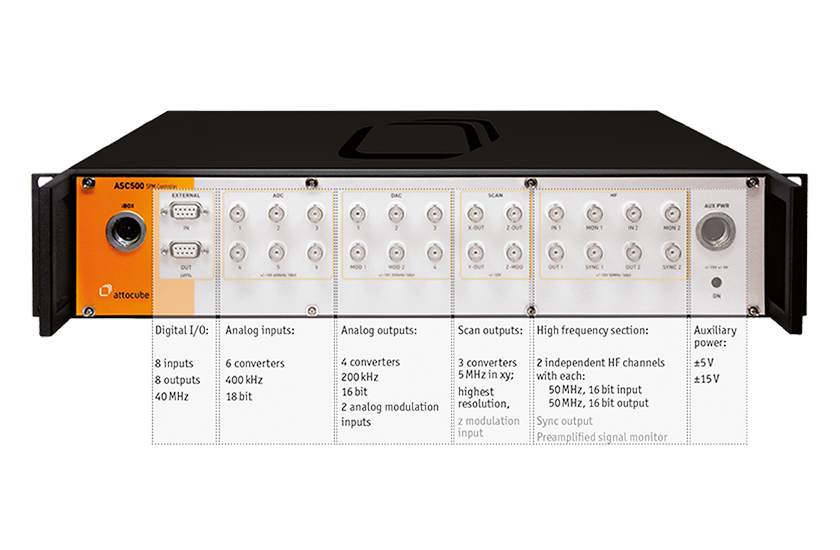
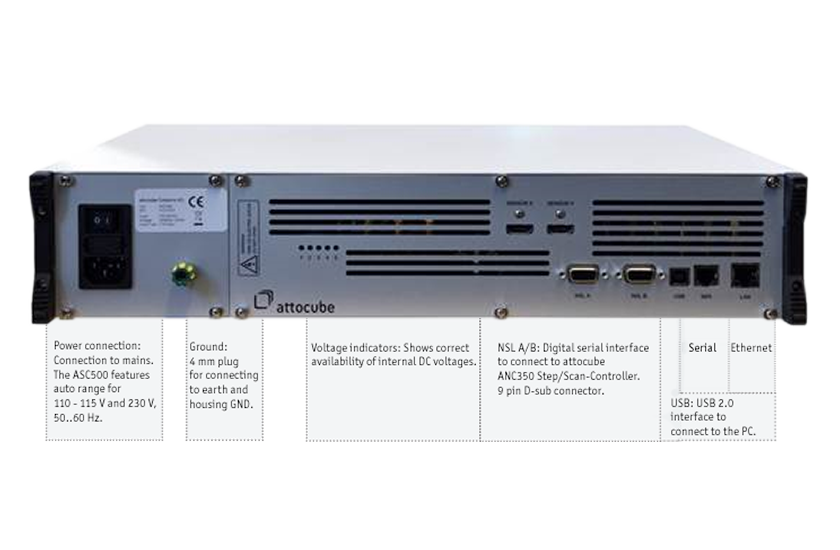
Software
Customer Feedback
Dr. Benjamin Bryant
London Centre for Nanotechnology
The attocube low-temperature AFM is a versatile instrument which provides a good balance between the flexibility of a user-built setup and the reliability and ease of installation of a commercial instrument. I particularly recommend the ASC500 SPM controller, as it allows for advanced control modes such as phase lock loop (PLL), but still provides a great deal of flexibility in configuration, and ready access to all signals.
Lior Embon
Group of Prof. Eli Zeldov, Weizmann Institute of Science, Israel
Working with an evolving self-developed technique means our needs constantly and rapidly change. It is thus very important for us to have a controller with high flexibility and versatility. The ASC500 allows us to easily and smoothly adjust our measurement scheme to meet the needs of the moment. It has proven to be a powerful tool for scanning probe microscopy.


